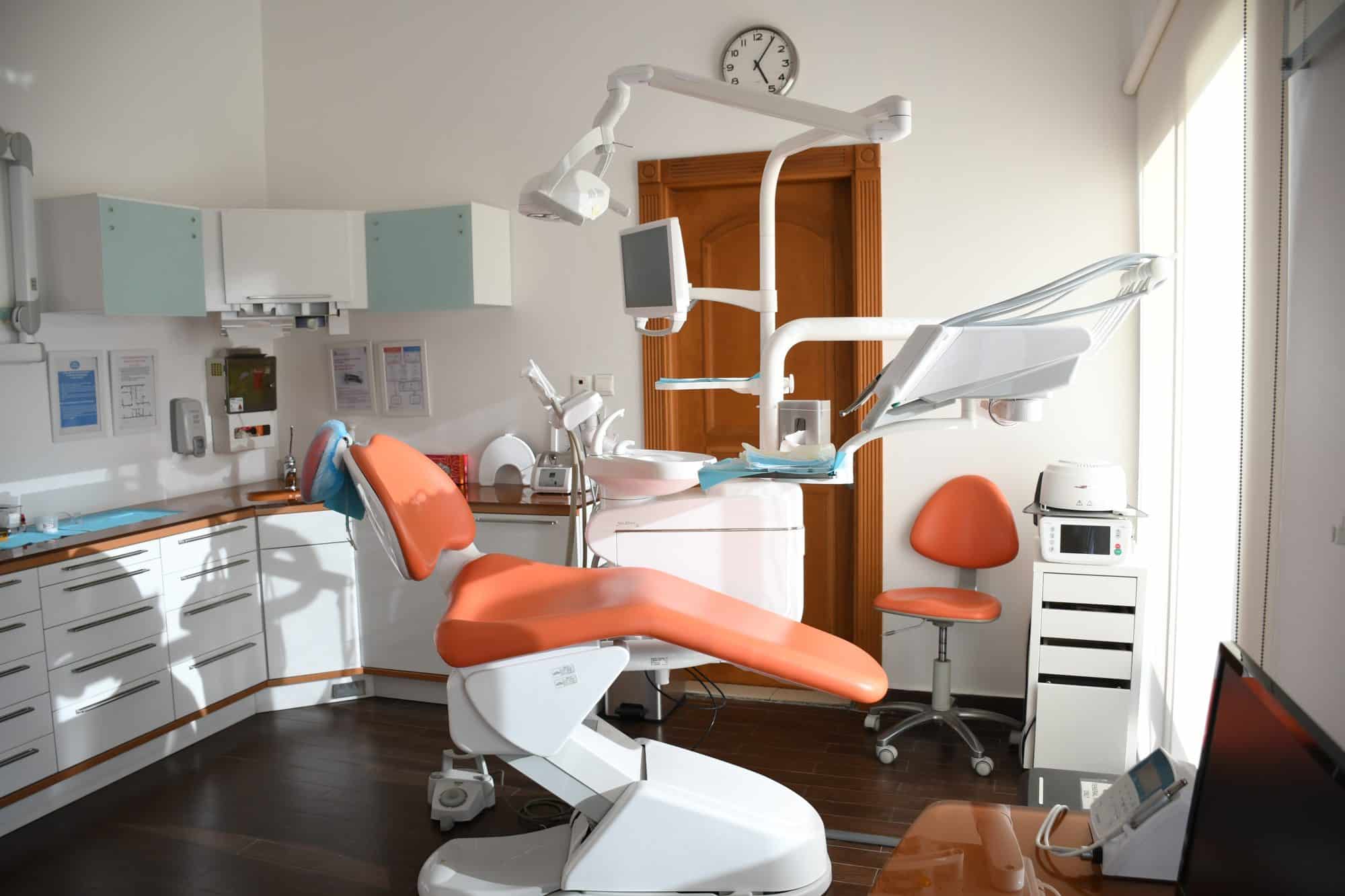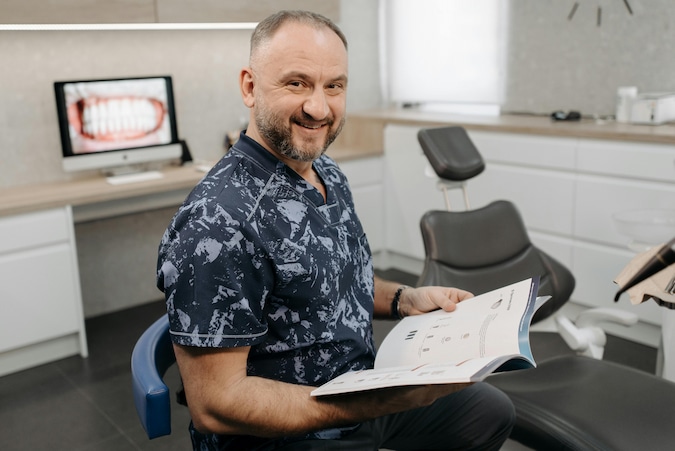
What You Get: Dental Plan vs Dental Insurance FAQ

Taking care of our oral health is one of those things we tend to skimp on until we’re old enough to realize why it’s essential. It’s not too late to prevent dental health deterioration or fix those issues before they worsen. Still, many people skip the dentist because they can’t afford it. If that sounds like you, it puts you in a Catch-22 situation.
You want to take care of your teeth before expensive problems happen, and you can’t ignore them any longer. But you don’t want to spend the money to care for your pearly whites while they’re still somewhat healthy. That’s where dental plans and insurance come into the picture. They sound like the same thing. But they’re not.
What does each one cover, and which type should you get? We have the skinny on all things dental insurance-related right here.
Regular checkups are essential. Find affordable dental checkups without insurance .
The Costs of Going to the Dentist

Your visit to the dentist places you in one of three categories: preventive, intermediate, or severe. How much each trip will cost you depends on your category.
As with any health condition, the sooner you catch an impending problem, the cheaper and easier it is to correct it. Yet, millions think that good oral hygiene habits are all they need to keep their teeth healthy.
Why spend money unnecessarily on preventive care when they can do it at home for free?
Is Your At-Home Care Saving You Money?
It’s a common misconception about why you should go to the dentist.
Look at your “free” home care costs versus regular dental exams, cleanings, and delayed treatment.
Preventative Care Treatment and Cost
Your dentist tells you to come in for regular cleanings and exams.
The American Dental Association recommends taking care of your teeth at home. The ADA also recommends following your dentist’s suggestions of how frequently you need cleanings and check-ups. It used to be twice yearly, but now that’s considered an “at a minimum” frequency.
When you’re in the dentist’s chair for preventative care, you enjoy the feel of solid tools cleaning all the bacteria and tartar off your teeth and gums.
The dental hygienist takes X-rays as needed, and the dentist examines your mouth for signs of problems.
Altogether, this should take about an hour or so of your time. The costs vary, but with X-rays, you can expect to pay between $300 and $500 without insurance.
Intermediate Care
While you’re at your visit, the dentist finds early signs of a problem. Or, while you’re at home, your teeth start hurting, and you make an appointment.
You’ll need a little more than routine cleaning in this intermediate stage.
Common treatments at this level include:
- Root planings to prevent periodontitis (chronic gum disease)
- Deep cleanings
- Fillings
- Crowns
Without insurance, these treatments add up .
Root planing and deep cleanings are over $266, and fillings cost $175. Crowns are $500 or more, depending on the material used to make each one, plus placement visits once the permanent crown is crafted.
Still, the cost of these treatments is minor compared to the extensive procedures necessary if you put them off.
Procedures for Severe Dental Issues
You’re now entering the category of severe problems. That includes procedures like root canals, extractions, implants, bridges, and dentures.
Depending on the placement and how many you need, these costs average:
- Root canals – $1,109, plus anesthesia
- Extractions – $180, plus anesthesia
- Implants – $2,013, plus anesthesia and placement visits
- Dentures – $1,740, plus extractions, anesthesia, and placement visits
With rates like this, it’s easy to see why catching your dental health issues in the first two levels pays off (quite literally).
Learn about Selfgood’s health and wellness benefits for freelancers, including Aetna dental benefits.
What Dental Insurance Covers
Insurance carriers know that their best return on investment comes from preventative dental care.
When patients don’t have to pay much for wellness and minor treatment, they’re more likely to go to the dentist and avoid the need for expensive procedures.
PPO Versus DHMO
Dental insurance is usually affordable, too. You can choose between PPO and DHMO plans.
A PPO, a preferred provider organization , controls which dentists you can visit. Your insurance will cover treatment if you see someone participating in their network.
DHMOs are dental care plans that work like health plan HMOs ( health maintenance organizations ). You’re assigned an in-network dentist. Your coverage is paid for as long as the dental procedure is on the list of approved treatments. Your policies and treatment cost less because the focus is on preventive care — hence the word maintenance in HMO.
However, it may not cover more expensive procedures.
Evaluating Your Dental Plan
A dental insurance plan is great to have as a freelance mechanic or a freelance physical therapist as long as it covers what you need it for. Before investing in a policy, review the covered treatments and exclusions. Then, verify that what you hoped to get out of the coverage is on the list of approved procedures.
Also, watch out for waiting periods, a predesignated time frame you must meet before the policy covers specific treatments. This caveat is a protective measure many insurers use. It guarantees a person doesn’t take out an approach, have an expensive procedure, and cancel the insurance. So, for example, if you need a root canal ASAP, and that’s why you want dental coverage, a waiting period will delay your care. Next, check the annual maximum payout.
Unlike health insurance , which rarely has a cap on how much the insurer pays for treatment, dental policies usually have a limit. In many policies, this limit is something like $1,500 or $2,000.
Is it worth paying your monthly premium, deductible, and copays for a policy with a low annual maximum?
Finally, look at the network of providers. Is there a doctor on the list in your area whom you wouldn’t mind seeing?
If the answer to all three of these factors is yes, then a dental insurance plan is a wise addition to your dental care regimen. Otherwise, a dental savings plan could be a better investment.
Read: Supplemental Benefits for Independent Contractors, Entrepreneurs, and Freelancers
How Dental Savings Plans Work

When you invest in a dental savings plan, you’re not dealing with an insurance company. Instead, it’s a membership similar to Sam’s or Costco.
With a savings plan like the one offered by Selfgood, you can see any dentists or providers who agree to participate.
You show your membership card, and you’ll receive discounted services.
Mega-insurer Aetna powers Selfgood’s dental savings plan, so you’ll have plenty of participating providers available.
How to Use a Dental Savings Plan
You pay your bill at the time of your visit, and that’s it.
No claims to fill out, deductibles, waiting periods, or other hassles exist. However, you can file your expenses with your Health Savings Account (HSA) for reimbursement or use your HSA card to pay your dental bill.
If you don’t already have a Health Savings Account, you might want to look into creating one. These accounts let you put money aside for medical expenses and avoid paying taxes on those funds, which can be used to cover the costs of going to the dentist, where you use your dental savings plan to get reduced rates.
In a nutshell, using your dental savings plan is similar to paying like a cash customer. The difference is that you show your membership card, and you get a discount on your treatment. It’s that easy.
Subscribe To SelfGood
Get up to date perks and Gigworker news. Easy. Simply. SelfGood. Subscribe.
Comparing Dental Insurance Versus a Savings Plan
Now that you understand dental insurance and savings plans , the question is:
Which one is right for you?
Let’s compare the two side-by-side to help you make your decision.
Coverage
Coverage with a dental plan includes preventative care.
This is usually free or with a low out-of-pocket cost as long as you use a participating provider in the plan’s network. In addition, it’ll cover included procedures at a percentage until the insurance reaches the annual maximum payment allowed.
Dental savings plans allow all services at a discounted rate if you use a participating dentist.
Exclusions
PPO plans have a covered procedure list on your “plan details” sheet. Anything not on that list is excluded. It’s also worth noting that Dental Health Maintenance Organization (DHMO) plans typically focus on preventative care, and other treatments may be excluded.
Cosmetic dentistry is almost always excluded from all traditional dental insurance plans. (This includes teeth-whitening procedures.)
Dental savings plans rarely have exclusions. Instead, the discounted rate for treatments varies.
Annual Fees
A freelance hair stylist or plumber can expect individual dental insurance premiums to average around $30 per month, bringing the annual cost to $360.
Dental savings plans are a one-time annual membership fee of $80-$200, depending on the company.
Costs
In addition to the annual fees, you’ll incur other dental expenses during your visit.
With a dental insurance policy, your freelance electrician or bartender x-rays, cleanings, and exams may be free, or have a small copay after meeting your deductible. Other procedures are often covered at 50% or 80% of the reasons allowed amount set by the insurer.
So, if you go for a cavity and end up needing a root canal, the cost would be close to $2,000, likely covered at 50%. Your portion of the treatment would then be $1,000 or more.
And if the annual maximum is $1,000-$1,500, your insurance will no longer pay for the benefit period. All other treatment comes out of your pocket as you pay your monthly premiums.
Dental savings plans also give you a reduced rate for your treatment.
The discount can range from 10% to 60% with participating providers. For example, at an average 20% discount, you’ll pay $1,600 for the same root canal with no deductibles or monthly premiums.
The overall cost is similar. But with a savings plan, you’re not tied down to limited providers and told by your insurer what is and isn’t allowable treatment.
What’s the Takeaway?
The critical difference between dental insurance and a discount dental plan is that there are no limitations when you use a savings plan.
You’re not paying insurance premiums for a policy with an insurer who will deny coverage for anything they consider not necessary. You get a discounted rate for all dental services, regardless of what they include.
This makes the dental savings plan the ideal supplement for anyone with Medicare coverage, which doesn’t include vision or dental.
It’s also perfect for self-employed workers on a budget who need various self-employed insurance policies. Or anyone who doesn’t have Marketplace insurance through the Affordable Care Act with dental as a backup.
Selfgood’s Dental Savings Plan
Freelancers and self-employed business owners deserve access to affordable dental health care.
Just because you left behind your 9-to-5 job doesn’t mean your oral hygiene should suffer, and Selfgood can help you stay in top shape.
Selfgood partners with the Alliance of Gig Workers to get corporate dental coverage discounts through Aetna.
With Selfgood’s dental savings plan, you can choose from thousands of participating providers and enjoy reduced rates on all your dental health services.
No claim forms, exclusions, waiting periods, or monthly premiums.
Learn more about self-employed dental coverage in our article — How to Get Low-Cost Dental Care When You’re Self-Employed.
Conclusion
- Do you want control of your dental treatment without annual caps?
- Do you not mind paying out-of-pocket at a discounted rate?
Then, check out Selfgood’s dental savings plan.
Selfgood’s platform allows self-employed workers (like you) access to corporate discounted rates individually.
While checking out Selfgood’s dental plans, you’ll see the rest of the benefits you get with your membership. Enjoy premium discounts on legal services, office supplies, prescriptions, and more when you sign up with Selfgood.
Sign up for a membership with the Alliance of Gig Workers to access freelancers’ benefits and resources.
Learn how to obtain self-employment insurance in your field:
Freelance Disability Insurance | Freelance Ghost Insurance | Freelance Workers Comp Insurance | Freelance Critical Illness Insurance | Freelance E&O Insurance | Freelance Airbnb Host Insurance | Freelance Commercial Auto Insurance | Freelance Commercial Property Insurance | Freelance Utah Home Insurance | Freelance Amazon Flex | Freelance Carpet Cleaning Insurance | Freelance Window Cleaner Insurance | Freelance Pressure Washer Insurance | Freelance Electrician Insurance | Freelance Mechanic Insurance | Freelance Junk Removal Insurance | Freelance Bartender Insurance | Freelance Hair Stylist Insurance | Freelance Barber Insurance | Freelance Taskers Insurance | Freelance Web Designer Insurance | Freelance Doordash Driver Insurance | Freelance Uber Driver Insurance | Freelance Plumber Insurance | Freelance Writer Insurance





